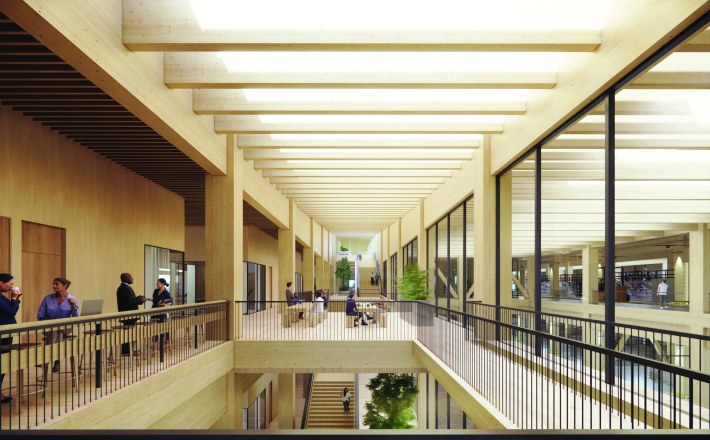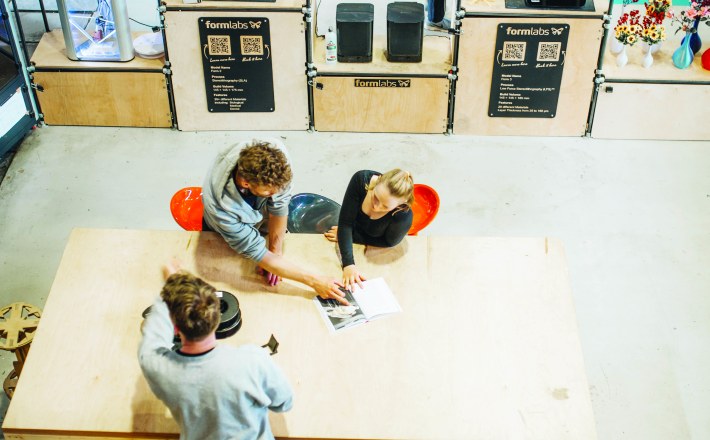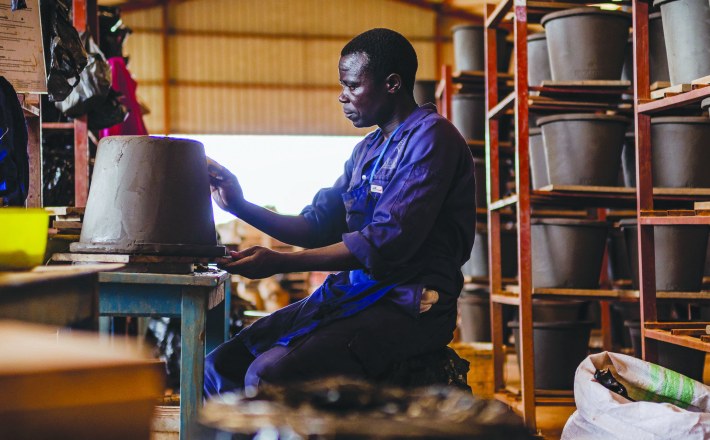Improving Cities
By 2050, two-thirds of the world’s population will live in cities. At the moment, our urban epicentres make up just over 3 percent of the world’s landmass but account for three-quarters of global pollution and 70 percent of energy consumption. As such, making cities more sustainable is a crucial part of our fight against the climate crisis; not only for the planet’s survival but also for global health and happiness
The role of tourism
Tourism is intricately woven into the fabric of many cities. It can trigger rapid urbanization but also can help to halt it by providing livelihoods in rural areas. Either way, the needs of residents and visitors are often in sync. What makes a city a good place to live—clean air, affordable transport links, lively culture, treasured heritage, accessible open spaces, and services to suit a range of budgets and needs—also makes a city a great place to visit. While the residents’ needs must always come first, tourism can facilitate progress. In theory, cities are ripe for sustainable living. By living in such proximity, city-dwellers should be more efficient, both economically and environmentally. The reality, however, is often quite the opposite. Many parts of the world have experienced urban growth at an unprecedented rate, and cities haven’t had the time to adjust thoughtfully or sustainably.
Instead, urban areas are often associated with inequality and pollution. By 2030, the UN estimates that over 2 billion people in the world will be living in slums. Even in the developed world, economic endeavour favours speed over sociability. So most major cities have been sliced and diced by petrol guzzling arteries to the detriment of the environment.
Recognizing this balance of tensions and hope can help us to understand how we, as travellers, can improve cities. By visiting the world’s more ‘liveable’ cities—those championing green technology, innovative solutions and social equality—we can incentivize and support progress. Where this is not possible, we can support environmental and social projects funding the changemakers that seek improvement. We can also travel to improve our home cities by bringing back with us news ideas and innovations to create a ripple effect of change in our own neighbourhoods.
Greening urban spaces
Adopting a more eco and nature-friendly approach to city-living requires significant investment. Tourism can play its part, particularly when destinations develop sustainability policies that put nature first. Some recent examples include Singapore, which has increased its green cover by 10 percent in the last 20 years, and Vienna, which has created its first ‘climate adapted street’ with gardens, spaces for bikes, and trees. Sweden’s second city, Gothenburg, has topped the Global Destination Sustainability Index two years running by choosing green hotels and places to stay helping to promote biodiversity and innovate with green tech, travellers can create a more sustainable city for everyone. Tourists can also support projects that work to green-up a city like cycling networks, kayaking tours, and conservation activities in city parks.
Hotels
Hotels can play a leading role in greening cities, too. Pioneering green hotel designs include the Radisson Blu Hotel in Frankfurt, which generates its electricity from the heat generated from the building, and Vo Trong Nghia Hotel’s secret, cascading garden in Vietnam’s Hoi An. In Luise, Germany, Creativhotel has created the world’s first ‘renewable hotel rooms’ based on cradle-to-cradle sourcing. Everything is recyclable or biodegradable; the ceilings are made from straws and the carpet from recycled fishing nets.
In some cases, hotels are best placed to innovate green ideas that will hopefully catch on. The UAE based developer Seven Tides is planning to use a hydroponic greenhouse on the World Islands to supply its portfolio of three hotels in Dubai. Hydroponics is a more efficient growing technique and can reduce water consumption by up to 90 percent. Growing produce locally also reduces carbon emissions.

Ljubljana, Slovenia
Europe’s ‘greenest city’ knows this better than most. The quaint cobbled capital of Slovenia, Ljubljana, has won much acclaim thanks to its environmentally sensitive and long-term mindset. Between 1996 and 2006 the whole city went through a 10-year transformation to remove cars from the city centre. Planning instead focused on public transport and pedestrian and cycling networks.
While putting people (rather than cars) back into the heart of the city centre, the city also revitalized nature by planting over 2,000 trees, building five new parks, and making the banks of the River Sava more wildlife-friendly. Visitors have lapped it all up ever since, from whizzing between sites on electric Kavalir (Gentle Helper) buggies or strolling along the 7,000 tree-lined Path of Memories and Comradeship.
The transformation resonates with residents and visitors alike—thanks to car-free streets, the city is more ‘authentic’ than ever. It’s also easier to get about, and the air is cleaner. Ljubljana’s sustainable ethos has helped to bring locals and tourists closer; it’s a far cry from the clashes that now dominate so many other European cities. Let’s hope it stays that way.
Transport
Other cities that top the green charts include Copenhagen, Oslo, Gothenburg, and Amsterdam. Copenhagen has a Cycle Score for how bike-friendly each neighbourhood is, and Oslo is reopening its waterways to restore habitats and make them more accessible. Almost a third of vehicles sold in the city are now electric, too, and Gothenberg will soon get an electric river ferry. In the United States, Portland welcomes eco-minded visitors with over 180 miles of bike lanes, eighty bus routes and just under 100 train stations; unlike so many other cities on the West Coast, cars are less of a focus.
Some of the most successful green schemes have caught on worldwide. Paris’ Velib was the world’s first bike-sharing scheme, attracting 20 million users in its first year. The motivation was to cut dangerously high emissions in the city centre, but it soon turned out to be a novel way for tourists to get about, too. Thanks to its popularity, schemes cropped up all over from Shanghai to Madrid. In Berlin, for example—a vast, unwalkable city—it’s possible to spend a weekend pedalling around rather than burdening transport or clogging the streets with taxis.

City Farms and Cleaning Pastic, Europe and US
Even city farms are getting greener. In 2020, Paris will reveal the world’s largest urban farm—a 14,000 m2 site on the top of an exhibition centre that will produce 1,000 kg of fruit and vegetables in high season. In New York, visitors can get back to nature on a trip to Brooklyn Grange Rooftop Farms, where tasting menus and workshops revolve around sustainable living and ecology. In Rotterdam, hotels and restaurants feed cows food waste scraps and collect milk from the world’s first floating farm.
Travellers can also help to clean up cities. Rather than a chore, this can often provide a fresh perspective. In London, Copenhagen and Amsterdam, various plastic clean-up schemes get people retrieving rubbish from canals and rivers while taking part in kayaking, standup paddleboarding or boating. Guests on Copenhagen’s GreenKayak can ‘pay’ for kayak rental by bringing back a bucket of rubbish gathered from the harbour and the canals. Founded in 2017, the not-for-profit and its volunteers have collected a total of 24,319 kg of plastic to date.
Throughout Europe, Migrantour demonstrates how migrants have shaped some of the continent’s most famous cities. The organization describes itself as ‘a form of responsible tourism at kilometre zero, which sees as protagonists fellow citizens also coming from distant worlds’. On a tour of Turin, Italy, a guide might take guests through Eastern Europe, South East Asia and the Middle East within the space of an hour. We so often celebrate cities as melting-pots of cultures, languages, beliefs and food from all over the world, yet how often do we absorb all those different perspectives when travelling around them?


Case Study Talaysay Tours, Canada
Tours led by refugees, indigenous groups, or migrants can also help to break down barriers. In Canada, First Nation owned Talaysay Tours guides visitors around Vancouver, the Salish Sea, and Stanley Park through the eyes of the Shíshálh (Sechelt) and Skwxwú7mesh (Squamish) First Nation. The dialogue shines a light on the city’s relationship with nature and First Nation culture, both harmonious and destructive.
Unseen Tours, UK
Tourism can also play a role in challenging preconceptions and uplifting the lives of marginalized people. In London, Unseen Tours invites tourists and locals to ‘experience London’s secrets through the eyes and voice of the homeless’. Twenty former homeless people lead tours around their patch—Pete reveals the eclectic back streets of Brick Lane (below), and Viv sheds new light on storied Covent Garden. The concept not only breaks down barriers and misconceptions around homelessness, but 60 percent of ticket revenue is paid directly to the guides, and any additional profit is reinvested into the business.





